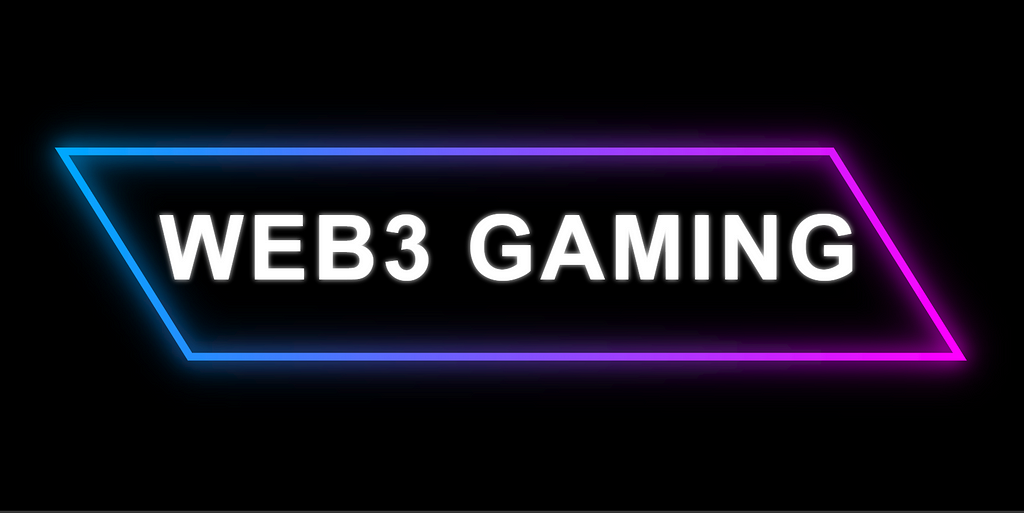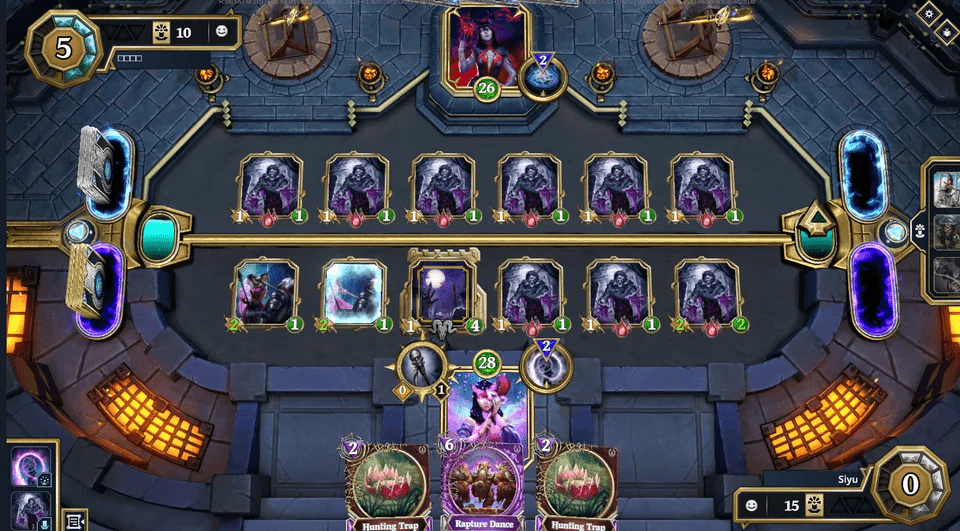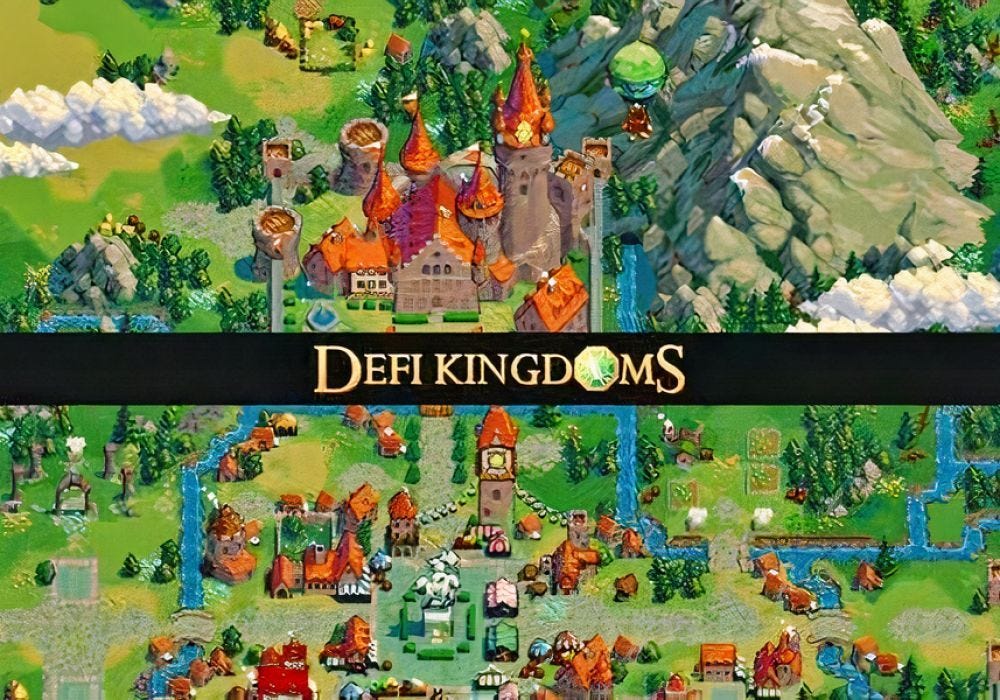Web3 Gaming: Is the Next Era of Gaming Upon Us?

Since their creation in the 1970s, video games have evolved from simple 2D graphics into dynamic, high-resolution experiences. Yet, over the past few decades, most advancements have been incremental — primarily centered around visuals and faster gameplay.
Gaming is now poised to make a massive leap with the power of blockchain.
Web3 games don’t merely offer more advanced gameplay. This era of gaming is introducing entirely new elements within games — including financial incentives — that will redefine the player experience as we know it. While the potential is massive, developers must learn from past missteps and convince traditional gamers that Web3 titles are the future of gaming, not just short-term financial gimmicks.
Play-to-Earn Models: Earn Finananical Rewards Through GamingOne of the most significant innovations in Web3 gaming has been the play-to-earn (P2E) model (also called GameFi). Unlike traditional games, where the points or achievements players earn are confined within the gaming environment, P2E games reward players with cryptocurrency and NFTs that can be traded and sold.
This model has been particularly popular in developing countries where it has become an alternative income source. However, the lack of sustainability of the in-game economies has prevented P2E games from achieving ongoing success. In many cases, the financial incentives overshadow the gameplay experience and games fade into obscurity when their in-game assets lose value.
In the NFT article, we highlighted how Axie Infinity experienced this very dilemma. The game had about 2.8 million daily players at the peak of the GameFi bull run in 2021 but now has fewer than 100,000 on most days.
Looking forward, the next P2E game that can balance financial incentives with fun and engaging gameplay has the potential to be a huge success.
NFTs: Collect and Trade Gaming AssetsNon-Fungible Tokens (NFTs) are a natural fit in Web3 games. In traditional games, players lose access to their characters and items once they’re done playing. But with gaming NFTs, they maintain true ownership over the in-game items they earn or buy.
These items can range from rare weapons or accessories to complete characters to use within games, all of which are secured on the blockchain, assuring owners that their assets cannot be duplicated or altered. In some cases, NFTs can even be used across different games, allowing players to create a consistent digital identity (we’ll explore this concept of interoperability in more detail later on). And of course, gaming NFTs can be bought, sold, and traded, enabling players to profit from their gameplay.
Similar to P2E games, NFT-based games (and really the NFT market as a whole) have seen a sharp decline in interest and value since the 2021 boom. However, thanks to their seamless integration with Web3 games, developers who have found novel ways to bring interactivity to NFT ownership have secured a foothold in the space.
One standout example is Gods Unchained. Similar to popular trading card games like Magic: The Gathering, Pokémon, and Yu-Gi-Oh!, players collect cards (in the form of NFTs) to use in strategic battles against each other. While many Web3 games struggle to retain players, Gods Unchained has attracted over 500,000 registered users by integrating a proven gaming model with the excitement of collecting different NFTs.
 Gods Unchained gaming interface
Gods Unchained gaming interfaceAnother successful example is Sorare, which combines daily fantasy sports with NFT ownership. Players use NFT versions of officially licensed digital player cards to assemble lineups for contests. Contest results are based on real-world stats from sporting events, motivating Sorare players to collect NFTs of top-performing athletes. As of early 2025, Sorare has over 1.5 million users and partnerships with major sports leagues, including the NBA, MLB, and various soccer leagues.
DeFi Integration: Generate Passive Income in the Gaming EcosystemSome Web3 games are taking financial integration to another level by incorporating Decentralized Finance (DeFi) elements. Through staking, yield farming, and liquidity pooling, players can generate passive income while gaming.
Apart from earning cryptocurrency and NFTs, Web3 games bring another layer of financial incentives with DeFi. Even more, this approach introduces traditional gamers to the wider Web3 and cryptocurrency landscape. The allure of additional income can expose gamers to decentralized exchanges, DAOs, and an array of innovative protocols built on blockchains that aren’t necessarily gaming-focused.
DeFi Kingdoms perfectly demonstrates the intersection of gaming and DeFi. It’s a fantasy role-playing title (RPG) that has successfully integrated numerous DeFi components into its gameplay experience. Players can stake in-game assets to earn rewards, participate in liquidity pools, and farm tokens — all while exploring and playing in an immersive world. At the peak of its popularity in 2022, players had locked nearly a billion dollars in assets in the DeFi Kingdoms ecosystem.
 DeFi Kingdoms gaming interface
DeFi Kingdoms gaming interfaceHowever, DeFi can be off-putting to traditional gamers. Many still perceive financially-driven Web3 games as nothing more than a form of gambling, and DeFi perpetuates this stigma in many ways. In the future, developers must not only educate gamers on the processes and terminology associated with DeFi but also encourage responsible investing.
How Web3 is Changing the Gaming ExperienceWhile GameFi is a big part of Web3, it’s just one aspect of this new generation of gaming. As blockchain technology advances, we’re starting to see games evolve in ways that were previously unimaginable. Developers are now using the unique capabilities of this technology to create experiences that transcend the limitations of traditional gaming.
Empowering players through true ownershipDigital ownership is a core tenet of Web3 gaming. Most gamers invest time and money into gameplay but receive nothing in return beyond the experience. Any characters, skins, or items they unlock are isolated within the gaming ecosystem, forcing them to forfeit control over these assets when they turn the game off for the final time.
The use of blockchain technology in Web3 gaming means players can truly own their in-game assets. This allows them to freely trade or sell their items, both in and outside the game, creating opportunities for players to monetize their achievements.
Digital ownership enhances players’ engagement with the game, as the experience becomes not only a means of entertainment but also a source of income.
However, the first iterations of digital ownership in gaming have come with downsides. Pay-to-win scenarios have arisen — with wealthier players dominating gameplay by hoarding powerful assets that other players can’t afford. Additionally, the advantage of digital ownership diminishes as assets lose both utility and value. Games like Axie Infinity have shown that players can end up stuck with irrelevant and nearly worthless items once the game’s popularity fades.
As we move into the era of Web3 gaming, developers must balance financial incentives with compelling gameplay while building sustainable and fair ecosystems that keep players invested long-term.
Interoperability and cross-game asset usageThe concept of digital ownership doesn’t just apply to individual games. It extends into the broader gaming world through the principle of interoperability. In Web3 gaming, players can use the assets they earn or purchase across multiple games and platforms.
By leveraging blockchain technology and smart contracts, Web3 game developers create standardized protocols that allow in-game assets to be recognized and transferred seamlessly between different games. This not only means that a specific asset (e.g., a weapon) could be used across various games but a player’s entire character could exist in every title they play, allowing them to have a consistent digital identity.
The ability to use assets across multiple games is just one way Web3 gaming offers a deeper and more captivating experience than conventional gaming.
Persistent virtual worldsOne of the most exciting developments in Web3 gaming has been the rise of persistent, decentralized virtual worlds. Unlike traditional games that offer temporary rewards or consequences and reset between gaming sessions, Web3 games continuously evolve when players are offline.
Blockchain-based virtual worlds exist independently of any centralized server, allowing players’ actions to have a lasting impact that shapes the gaming environment and defines the narrative for everyone else.
Let’s say a group of players create a faction and overthrow a tyrannical leader within a game. That event could forever alter the world’s political landscape — unlocking new storylines and quests for others. The dynamic evolution of virtual worlds highlights how Web3 games deliver an unprecedented level of immersion compared to traditional games.
Going beyond the conventional gaming experienceWeb3 gaming is pushing the boundaries of what it means to “game.” While traditional games focus only on objectives and competition, Web3 platforms offer broader entertainment experiences.
Virtual worlds built on the blockchain aren’t strictly focused on gaming. They can also be spaces for social interaction, commerce, and events. For example, platforms like Decentraland host concerts, fashion shows, art exhibits, and other virtual events — alongside various games — allowing participants to enjoy different interactive experiences without leaving the digital world.
Imagine taking a break from your favorite game to wander over to a concert featuring an emerging artist, then stop by an art exhibit to browse and purchase NFTs. These experiences appeal both to hardcore and casual gamers and even to people who don’t game at all. By expanding on the long-accepted concept of gaming, Web3 platforms are creating multifaceted experiences that attract a larger, more diverse user base.
Tokenized game mechanicsDevelopers are also using digital tokens on the blockchain to represent various elements of the gaming experience.
For instance, a player’s achievements and abilities can be tied to blockchain-based tokens, which can be transferred between games, and bought, sold, or traded. This means that a player who masters archery in one game could carry that skill token into a similar title, enhancing their character’s proficiency from the start. Additionally, a player who wants to upskill in archery could acquire the necessary tokens from another player to do so.
Furthermore, tokens are used to represent a player’s quest history and achievements. Thanks to the blockchain, players can have a verifiable and immutable record of all their gaming accomplishments. Let’s say a player completes a challenging mission in one game. They could receive a token to showcase that achievement and display it on their profile across different games.
Overcoming The Negative Perceptions Held by the Traditional Gaming CommunityThe harsh reality is that traditional gamers and the established gaming industry have been slow to embrace Web3. Many see the financial aspects as a threat to the purity of gaming — believing that monetization has taken precedence over fun and engaging gameplay.
This is a fair concern. As we’ve already covered, the popularity of Web3 games during the last crypto bull market was driven by financial speculation. Traditional gamers have every right to question if P2E and NFT titles are just ways for developers to increase profits and non-native gamers to grind out an income.
Many established gaming companies have taken a strong stance against GameFi. For example, Steam, the leading game distribution platform, has outright banned blockchain-based games with NFTs or tokens, citing concerns over speculative assets and financial transactions.
Moreover, exaggerated reports of environmental impacts during the last crypto boom have contributed to the negative perceptions of Web3 gaming. While many of these claims have been debunked (Bitcoin mining accounts for a small sliver of global energy use, and many blockchains have transitioned to more efficient Proof of Stake (PoS) models) the initial wave of misinformation took hold just as Web3 games were emerging, leaving a lasting impression on the gaming community.
Regional differences in Web3 gaming adoptionInterestingly, skepticism around Web3 gaming is mostly confined to Western markets like the U.S. and Europe. In contrast, countries like Japan and South Korea have widely embraced GameFi. This is largely because many Asian governments actively support Web3 initiatives and encourage blockchain innovation (the U.S. government, by comparison, has taken a far more critical stance on blockchain).
With this backing, developers in Asia are free to create cutting-edge Web3 games, and players are allowed to buy, sell, and trade in-game assets. The alignment between regulatory bodies, developers, and players has allowed Web3 gaming to flourish in Asia.
Educating the gaming communityEducation will be key to bringing Western gamers to Web3. Blockchain is a complex technology, and many of the Web3 gaming concepts we’ve covered — like digital ownership, persistent digital worlds, and interoperability — have simply not been possible in conventional games.
Education should focus on these revolutionary concepts, rather than financial incentives. True gamers care about the gaming experience and will be more drawn to the exciting possibilities of Web3 games than their monetary benefits.
Strategies for Driving Web3 Gaming AdoptionWhile the potential of Web3 gaming is massive, significant work must be done to onboard new players. You could argue that the first wave of popular titles actually set the space back. Financial incentives vanished when the cryptocurrency market crashed, leaving participants with nearly worthless assets and proving critics right.
However, the past is the past, and the next generation of Web3 developers can take a more thoughtful, player-centric approach to attracting — and retaining — a loyal community.
Prioritize fun and engaging gameplayThe key to bringing gamers to Web3 is to simply create games that are genuinely fun to play. Early iterations of Web3 games focused too much on financial incentives. Players rapidly flocked to these games when asset values were high, and abandoned them just as fast when the market crashed.
Moving forward, developers must prioritize creating rich experiences that use GameFi components to enhance gameplay rather than dominate it. Players should be captivated by engaging storylines and solid mechanics, with Web3 elements subtly enriching the experience.
For instance, earning skill and achievement tokens should follow a logical progression so advancing in the game is a rewarding experience. Additionally, NFT ownership should feel natural and meaningful within the context of the game.
While this is easier said than done, we’ve already seen that attracting players through solely a GameFi-focused approach will not lead to sustained success. Developers have to create good games that stand on their own merit, rather than over-relying on monetization.
Leverage brand partnershipsWhile there are plenty of missteps from the first wave of Web3 games to avoid, one strategy from that time that has proven to be effective is partnering with well-known brands. The Sandbox — an early gaming platform — gained significant popularity in 2021 and 2022, largely due to collaborations with fashion brands, auto companies, musicians, and TV shows, all of which used the platform to create digital experiences centered around their unique offerings.
Teaming up with major brands helps developers onboard users who might otherwise be uninterested in blockchain-based games. By initially engaging with the brand’s digital world, players experience firsthand how fun Web3 gaming can be and are encouraged to explore similar experiences in other games and virtual environments.
Moreover, brand partnerships bring much-needed credibility to Web3 games. As we’ve covered, these games often face criticism for being a little more than a form of gambling. Branded games, however, stand apart from the NFT and token-driven titles that tend to alienate traditional gamers and the general public. By leveraging the appeal of iconic brands, developers can attract users to Web3 and build a broader gaming community.
Redefining player-developer relationshipsIn traditional gaming, players have little influence over the creation or evolution of the games they play. They either enjoy what’s available or keep searching until they find something that captivates them. Web3, on the other hand, has the potential to attract new participants by fostering more collaborative relationships between players and developers.
This can be achieved through Decentralized Autonomous Organizations (DAOs), where players vote on game updates, new content, and the development roadmap. These decentralized governance models give players a direct role in shaping their gaming experiences.
Another way Web3 can attract traditional gamers is through revenue-sharing models that reward users for their contributions. By engaging in community discussions or creating content (e.g., in-game assets or gameplay tutorials), players can earn compensation — typically in the form of the game’s native cryptocurrency. While relying too heavily on financial incentives can hinder sustainability, revenue-sharing offers a meaningful way to reward players who are invested in the game’s long-term success.
By taking advantage of decentralized governance and revenue-sharing, future Web3 titles can empower their community members to actively participate in the game’s development and growth.
Web3 Gaming is the Future of GamingWeb3 games had a moment of popularity but the momentum couldn’t be sustained. Moving forward, the real potential of Web3 games lies in the enhancements offered by blockchain technology. Digital ownership, interoperability, persistent digital worlds, and tokenized gaming mechanics are all pushing the boundaries of what’s possible in gaming.
Perhaps the traditional gaming world wasn’t quite ready for these groundbreaking concepts a few years ago. But with continued education and efforts to undo the negative stigmas surrounding Web3 gaming, developers have the opportunity to bring a significant leap forward to the gaming experience.
Web3 Gaming: Is the Next Era of Gaming Upon Us? was originally published in Coinmonks on Medium, where people are continuing the conversation by highlighting and responding to this story.
